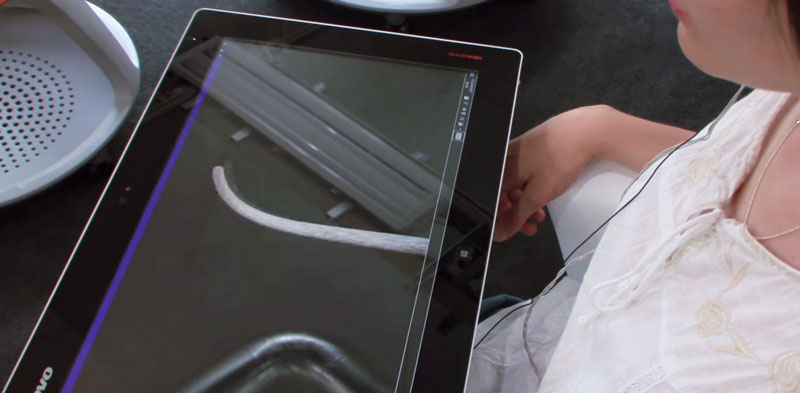
Robohub.org
Researchers use artificial tail to study how we adapt to brain-machine interfaces

Researchers from the Keio Institue of Pure and Applied Sciences (KiPAS) are working to reveal the mechanism by which newly acquired knowledge and information is transmitted and evolves among organisms with intelligence. This research is being done through pseudo-augmentation of body structures using a brain-machine interface, to investigate the process by which groups of individuals adapt to novel bodies and environments, using methods from the natural sciences.
Junichi Ushiba and Giulia Cisotto explain their work:
“Originally, I was very interested in the fact that we ourselves evolved from monkeys. The form of a body changes gradually through the process of evolution – for example, having a tail or not having a tail – and species that survive are using that specially evolved body effectively. Thinking about what this implies, even if a body changes, unless the brain that controls the body has the ability to adapt to the change, then naturally, an organism can’t utilize the adaptation effectively like the rest of its body. So, I think that one important keyword Concept in evolution is that the brain itself actually has the ability to adapt flexibly to external objects even more than we think it does. That’s precisely why I think there may be a process where a part of the body that has suddenly changed is incorporated, as if it was a part of the organism’s body, and the organism adapts and evolves accordingly. I wondered if this kind of process couldn’t actually be verified using methods from the natural sciences, and that was the motivation for this research.”
The method used in this research is to observe, in the laboratory, a group of about ten people who have an artificial tail, which can drive a brain-machine interface, attached to their body. Participants learn how to move the artificial tail, and attempt to use it skillfully, like their own body, through trial and error. They also share the ways in which they’ve learned to use the brain-machine interface with other people.
“In the beginning the person doesn’t know how to use the tail, but with some sort of training it’s possible for the person to modulate his or her brain activity in a way to control the tail.
The second step will be to study, using the same technology, some sort of heredity, so some sort of transfer of these new acquired skills to other people. So in the second step we will have more than one person in the same room and the first person, who has already acquired the skill to correctly move the tail, by moving around the room and talking with the other people, can transfer these acquired skills to the other people. So that in a certain period of time, all the other people gradually acquire the same skills, probably in another way, but with this technology we can monitor how each person, individually, can acquire the new skill.”
In physical training methods for sports, dance, and music, and in traditional arts and crafts, there are a variety of long-established approaches and styles, so universal principles for passing on such techniques have not been established. By contrast, the results of this research will provide scientific principles regarding control laws, learning processes, and ways of transmitting knowledge to other people. So, this research could contribute to scientific advances in industrial and cultural activities.
“Unless there are mechanisms that enable information that’s been correctly acquired by the mind to be transmitted to other people reliably, cultural activities that get sustained for hundreds of years, or go on to evolve further, couldn’t exist. Through this kind of research using tails, what I really want to understand is the process by which intangible information is created in the mind and transmitted to other people, so we can reveal some aspects of how culture and civilization took shape, using methods from the natural sciences.”
tags: BMI, c-Research-Innovation, Giulia Cisotto, Japan, Junichi Ushiba, Keio University




